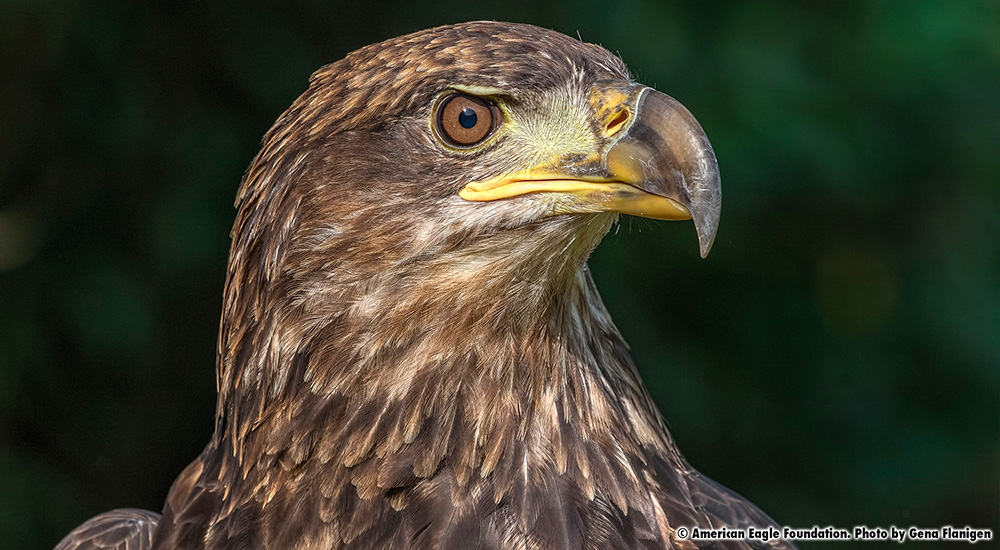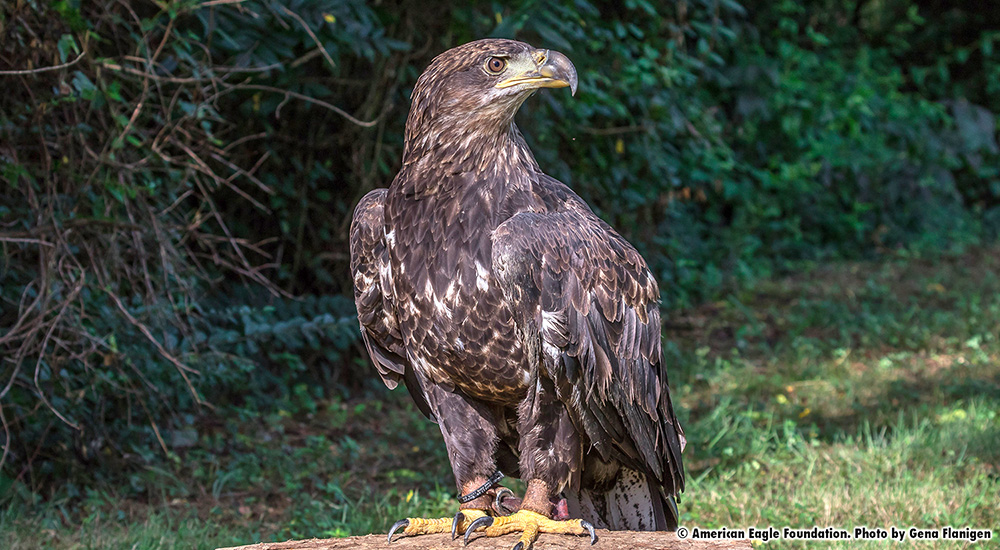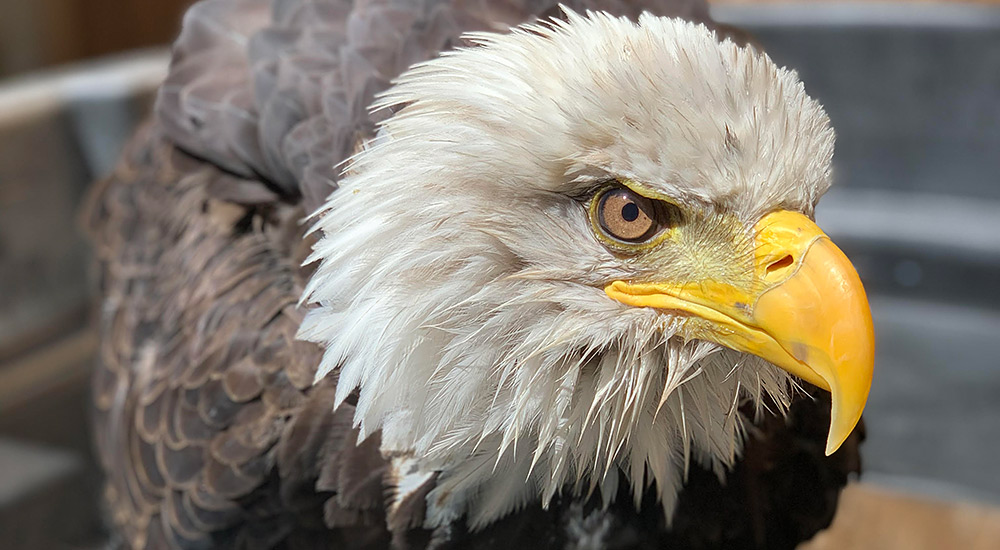ABRAHAM
Species: Haliaeetus leucocephalus, Bald Eagle • Hatch Year: 2013 • Sex: Male • Disability: Severe Wing Injury
Abraham is a male Bald Eagle who was rescued in Sevierville, TN, close to AEF Headquarters. As a nestling, Abraham’s nest blew over in a storm and he and his sibling fell to the ground. AEF staff rescued the two eaglets and transported them to the UT Veterinary School for treatment. Abraham’s brother, ‘Winfield’ fully recovered and was released back into the wild a year later, but Abraham suffered severe damage to his left wing and could not be released. Pictures later revealed a USFWS leg band on Abraham‘s wild mother, and she was determined to have been the offspring of Franklin and Independence, a Bald Eagle breeding pair residing in the AEF’s Eagle Mountain Sanctuary at Dollywood. This female eagle was released into the wild in 2008 at about 13 weeks of age from the AEF’s hack tower on Douglas Lake and then returned to the area several years later with a mate. After discovering this pair’s close ties to the AEF, we started a LIVE nest cam project to stream their daily lives, and they were honorarily named Lady Independence (after her non-releasable mother) & Sir Hatcher (after AEF mentor and friend Bob Hatcher). Although he cannot fully extend his left wing, he has become an exceptional educational ambassador starring in our Wings of America birds-of-prey show at Dollywood.
ABOUT THIS SPECIES
Bald Eagles were placed at the center of the Great Seal of the United States in 1782! Since then, they have served as the pride of America’s skies and the symbol of all that America stands for.
Bald Eagles obviously aren’t bald! “Bald” in this sense refers to an Middle English word that means “white headed.” When eagles fledge the nest at between 10 and 13 weeks of age, they are primarily all brown. An Eagle gets its full white head and tail feathers and yellow beak and eyes at around four to five years of age.
Bald Eagles typically mate for life. Usually, they will only look for a new mate if their faithful companion dies, but sometimes a new mate is chosen in a territorial fight over a nest.
In building a nest, Bald Eagles will choose a ‘super-canopy’ tree—one rising above the rest— near to water, with sturdy limbs and a commanding view of the surrounding terrain. Typical nest heights are 50-125 feet high. They make use of twigs, grasses, soft mosses and feathers in making their nests and normally return to the same nest each year during breeding season and add new materials to it. A new eagle pair’s nest usually measures about five feet in width and two feet in depth. As they add to it year after year, however, it can reach widths of over ten feet and weigh up to a ton or more. On the Channel Islands, where large trees are very scarce, Bald Eagles have built their nests on cliffs; and, in some coastal areas of Alaska and Canada where there are few tall trees, Bald Eagles will nest on the ground, using whatever materials are available.




